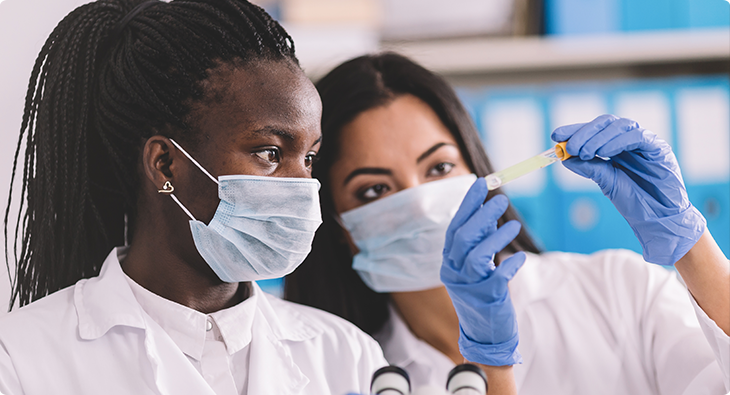How COVID-19 Is Changing Respiratory Testing Algorithms
As healthcare evolves through the pandemic, labs are strategically incorporating SARS-CoV-2 into routine testing
The COVID-19 pandemic has shaped our lives for more than a year, and one thing is certain: SARS-CoV-2 isn’t going away anytime soon. In fact, with concerns over emerging strains and lingering questions about whether vaccinated individuals can still be contagious, accurate diagnostic test results will continue to be essential.
Clinical algorithms used for respiratory tests continue to evolve, especially after accommodating the continuous presence of COVID-19 for more than a year now. Additionally, since many symptoms of COVID-19 overlap with those seen in influenza, respiratory syncytial virus (RSV), and other respiratory illnesses, testing has been one of the most challenging aspects of the pandemic. Influenza in particular shares several symptoms also seen in COVID-19, including fever, cough, difficulty breathing, fatigue, and more—all with varying degrees of severity.
Although there are other important differences between COVID-19 and other respiratory illnesses, testing is the best way to determine a diagnosis. Since the beginning of the outbreak, lab teams have had a need for reliable respiratory panels that include not only influenza A/B and RSV, but also SARS-CoV-2.
Respiratory panels offer several benefits compared to single-target tests
Beyond diagnostic confirmation, there are benefits to using a test that combines SARS-CoV-2 detection with testing for other respiratory infections. Running a single combination test is more comfortable for the patient since only one sample is needed, and with one streamlined workflow to get results for multiple targets, it ends up being more efficient for the lab as well, saving both time and resources.
Outside of flu season, it will still be important to include SARS-CoV-2 in regular respiratory infection testing. Ideally, the virus would be added to all standard respiratory panels used by clinical labs throughout the year, as well as to small, targeted panels for specific seasons and for vulnerable patient populations.
Of course, standalone testing for SARS-CoV-2 will continue to be important as well—particularly for back-to-work and back-to-school testing, before surgical procedures, and for other routine screening not based on specific respiratory symptoms.
With the ongoing increased need for flexible and comprehensive diagnostic testing tools, we’re working hard to help ensure clinical labs have options for managing SARS-CoV-2 testing in the long term. For targeted SARS-CoV-2 testing, we developed the ARIES® SARS-CoV-2 Assay (EUA) for the sample-to-answer ARIES® System. For high-throughput, panel-based testing, our NxTAG® Respiratory Pathogen Panel + SARS-CoV-2 (EUA, CE-IVD) and the NxTAG® CoV Extended Panel (EUA) deliver both flexibility and sensitive results. And for serology testing, the xMAP® SARS-CoV-2 Antibody Assay (EUA) enables the identification of antibodies against SARS-CoV-2 in serum. With additional plans to continue adding the SARS-CoV-2 target to our existing assays, it’s safe to say whatever your testing needs are, we have a solution for you.
For more information about our latest COVID-19 offerings, check out our website.
(EUA) In Vitro Diagnostic Use Under Emergency Use Authorization. This test has not been FDA cleared or approved. This test has been authorized by the FDA under an EUA for use by authorized laboratories.
(CE-IVD) For In Vitro Diagnostic Use. Products are region specific and may not be approved in some countries/regions.
Related Content:
- Luminex Diagnostic COVID-19 Offerings [Webpage]
- xMAP® Technology Users Battle COVID-19 with New Serology Assays [Webpage]
- A Laboratory’s Perspective: How the University of Louisville Infectious Diseases Lab Leverages Molecular Testing [Blog]
- How Luminex Is Supporting Research Partners’ Pandemic Response [Blog]
- Considerations Regarding RNA Extraction Kits for SARS-CoV-2 Detection [Blog]


